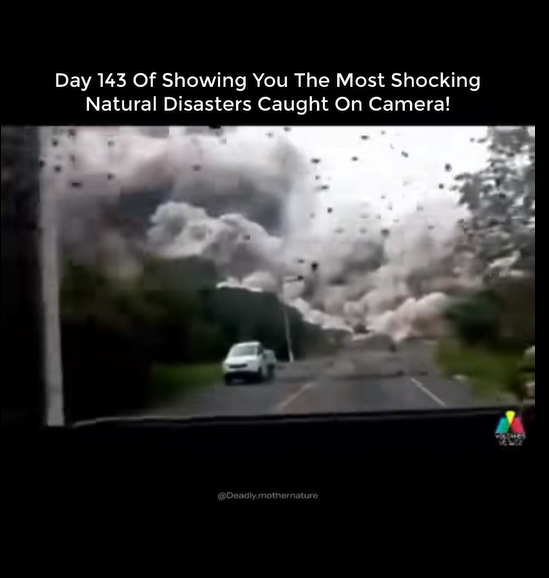The morning sky over southern Guatemala was a watercolor of ash and smoke when the mountain began to roar.
At first, it sounded like thunder rolling over the valleys—a low growl that made windows shudder in their frames. Then came the tremors. In the small village of San Miguel Los Lotes, families looked up toward the towering cone of Volcán de Fuego—one of Central America’s most active volcanoes—and saw something they’d feared all their lives: a boiling gray cloud racing down the slopes.
It was a pyroclastic flow—a deadly surge of gas, ash, and rock hurtling faster than any human could run. Within moments, it turned daylight into darkness.
“Run, just run!”
María López, 28, was hanging laundry when she heard the first crack of eruption. Her father shouted from the doorway, “¡Corre, María, corre!” She grabbed her five-year-old daughter, Elena, and ran barefoot down the road toward a narrow ravine where others were already fleeing.
“The ground was shaking like it wanted to throw us off,” she recalled days later from a temporary shelter near Escuintla. “You could hear people screaming, dogs barking, and behind us—the sound of fire and rocks.”
Survivors describe the flow as a living thing: a gray beast that swallowed trees, homes, and roads in seconds. Scientists say pyroclastic surges can reach temperatures above 700°C (1,300°F) and speeds over 100 kilometers per hour. Nothing in their path survives.
By the time María and dozens of villagers reached higher ground, a thick rain of ash had begun to fall. The air burned their throats and turned to mud underfoot. They could no longer see the volcano, only the growing cloud that blotted out the sun.
The Science of Destruction
Volcán de Fuego—“Volcano of Fire”—erupts frequently, but few episodes rival the ferocity of that November morning. Guatemala’s National Institute for Seismology reported multiple explosions within minutes, each one ejecting ash plumes miles into the sky.
“Fuego is unpredictable,” explained Dr. Alejandro Ramos, a volcanologist from Guatemala City. “You can have minor eruptions for months, and then suddenly—one catastrophic event. Pyroclastic flows are especially dangerous because they move too fast to escape once they start.”
Satellite imagery later showed that the flow tore through several communities before reaching the Pan-American Highway, cutting off rescue efforts for hours.
A Nation Holds Its Breath
As night fell, rescue teams armed with masks and headlamps combed through smoldering debris. Entire streets had vanished under meters of ash and rock. Soldiers carried survivors through knee-deep mud while helicopters dropped supplies to isolated towns.
In Antigua, 20 miles away, tourists watched the plume from café terraces, unaware that tragedy was unfolding in the valleys below. By the next morning, radio stations were reading lists of the missing.
International aid soon arrived—Mexico, the United States, and several European countries sent disaster teams—but for many families, it was too late.
Survivors and Silence
Weeks later, María returned to what remained of her home. The roof was gone, the air still thick with the smell of sulfur. She picked up a charred toy from the ash and placed it gently in her bag.
“I keep it for Elena,” she said quietly. “So she’ll remember what we lived through—and that we survived.”
Local authorities have since declared several villages uninhabitable, urging residents to relocate to safer zones. But for many, leaving the shadow of Fuego means leaving their livelihoods, their coffee farms, their memories.
After the Fire
Today, the volcano still smolders on clear mornings, a reminder of both beauty and danger. Children play soccer on fields dusted with gray ash, and life—tenacious as the green shoots pushing through the cinders—goes on.
“People here know the volcano gives and the volcano takes,” said Dr. Ramos. “It’s part of our landscape, our history, our fear.”
For survivors like María López, each dawn is a quiet victory—a testament to instinct, courage, and the will to outrun the unthinkable.
Sidebar: What Is a Pyroclastic Flow?
A pyroclastic flow is a fast-moving current of hot gas, volcanic ash, and rock fragments ejected during an explosive eruption. These flows can travel at speeds exceeding 100 km/h (60 mph) and reach temperatures up to 1,000°C (1,830°F). They are among the deadliest volcanic hazards, capable of flattening everything in their path.
